Looking for information on what happens if a foundation shifts? If so, you’ve landed on the right page because that’s what we’re going to review in this article. We’ll go over what it means to say a foundation is “shifting”, the difference between uniform and differential settlement, what causes a foundation to shift, repair options, and more.
What Does It Mean to Say a Foundation Is “Shifting”?
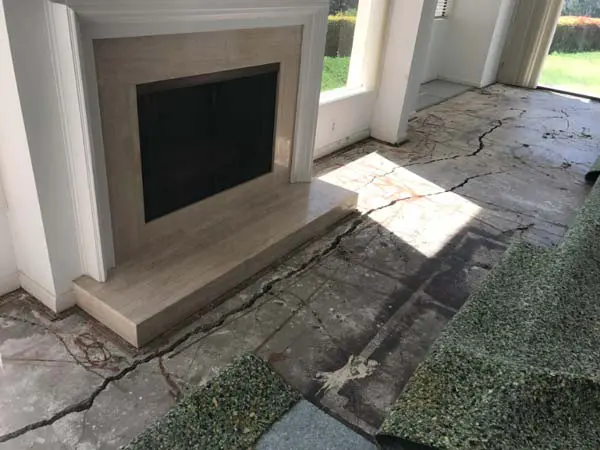
When we talk about a foundation “shifting,” we mean the foundation has moved for some reason, and usually, the term is associated with structural damage accompanying the foundation movement.
Uniform vs. differential settlement
Because they’re heavy, all foundations will settle into the ground slightly after construction. This is normal and usually nothing to be concerned about so long as the settlement is uniform. Uniform settlement can lead to minor cosmetic damage, such as tiny cracks in walls or floors. However, these cracks are not structural. In other words, they aren’t a sign the home’s structural integrity has been compromised.
The problem is something called differential settlement. This is when a foundation settles into the ground, but unevenly. An infographic is the best way to illustrate the difference between uniform and differential settlement:
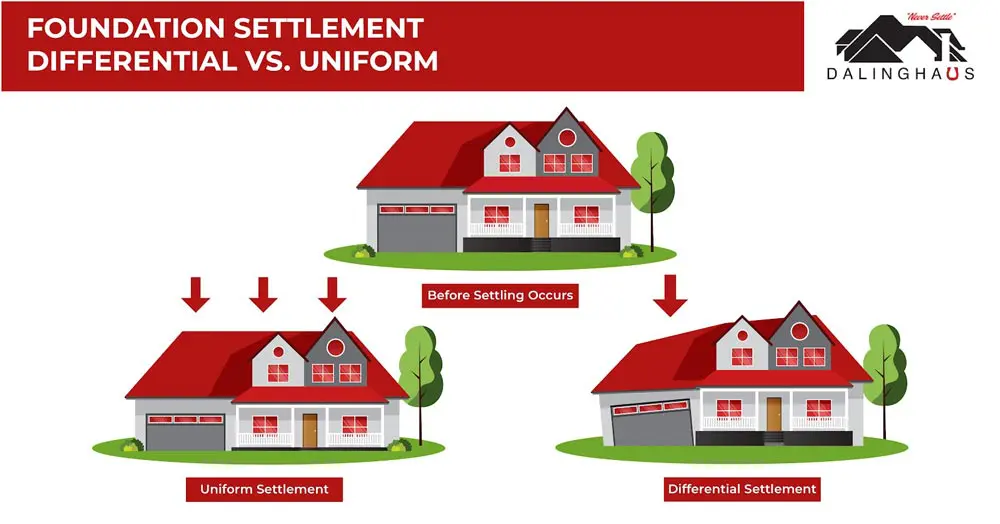
Differential settlement, if it isn’t corrected, can cause severe structural damage.
So, What Causes Differential Settlement?
Various factors, including the following, cause differential foundation settlement:
- Expansive clay soil – In areas with expansive clay soil, differential settlement is likely to occur due to the tendency of clay soils to shrink and swell depending on the moisture level.
- Erosion-prone soil – These soil types are easily washed away, which can cause voids to form under the foundation. If the foundation settles into the voids, differential settlement is likely.
- Improper site preparation – Uncompacted soil is loose and contains air pockets. A heavy foundation will compress loose soil, usually unevenly, resulting in differential settlement. Compacting the soil eliminates these voids and ensures a stable base for construction.
- Earthquakes – As you can probably guess, seismic events can cause a foundation to shift, leading to structural damage.
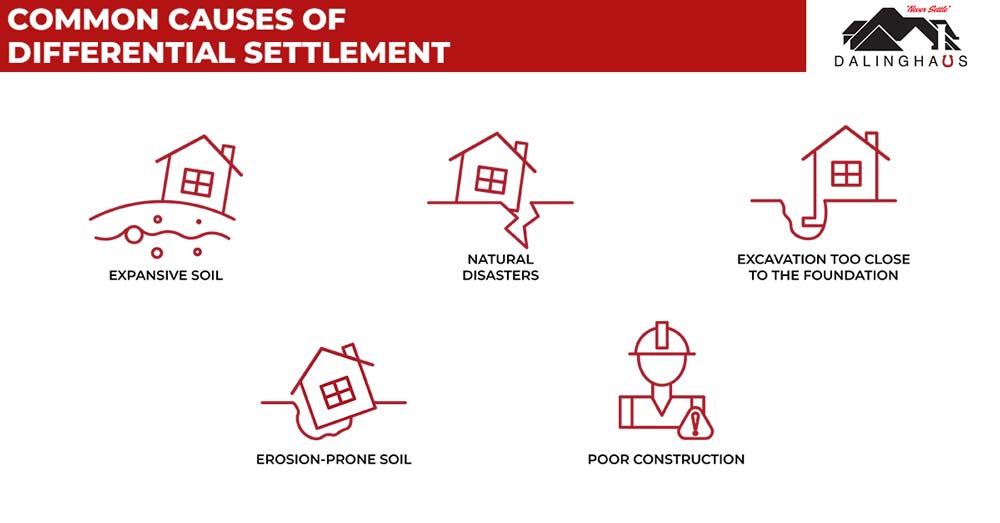
What Happens If a Foundation Shifts (i.e., Differential Settlement)?
Differential settlement puts enormous stress on a foundation, and if it isn’t corrected, it can cause severe structural damage that will cost a lot of money to repair. So, the best course of action is to prevent differential settlement. Fortunately, there are some things homeowners can do that will help prevent foundation problems. We’re going to talk about those in just a bit.
Signs of Differential Foundation Settlement
The most common signs of differential settlement include, but aren’t limited to, the following:
- Wall, floor, and ceiling cracks
- Uneven floors
- Stair step cracks in brick or masonry
- Doors and windows that don’t open and close properly
- Gaps between the walls and the ceiling or floor
- Chimneys and porches that are pulling away from the house
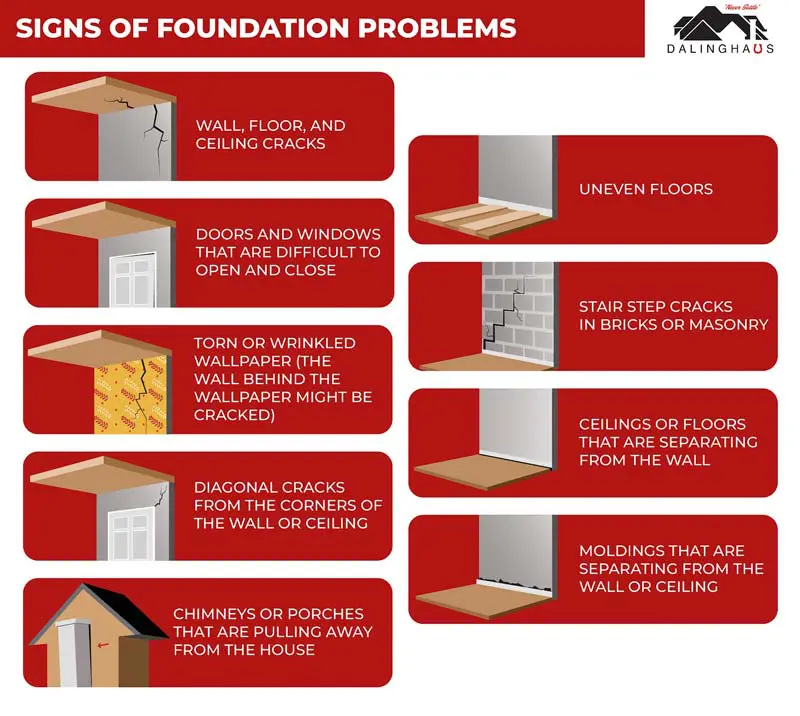
Repair Options for a Shifting Foundation
Underpinning is usually the go-to method for repairing differential foundation settlement. Underpinning involves installing piers (push, helical, slab) to stabilize and strengthen the foundation.
Push piers
Push piers are driven into the ground using the structure’s weight and hydraulic pressure. Once they reach load-bearing soil, they’re attached to the footing, and the foundation is raised as much as possible without causing damage. This will often close wall cracks, fix uneven floors, etc.
Helical piers
Helical piers, which are shaped like giant corkscrews, are turned into the ground until they reach the required depth and torque necessary to stabilize the foundation. Helical piers are often ideal for lightweight structures and buildings such as garages and porches.
Slab piers
Slab piers are push or helical piers installed through holes drilled in the slab.
Foundation underpinning to correct differential settlement is a minimally invasive and relatively quick procedure. Most of the time, homeowners experience no disruption to their daily routine.
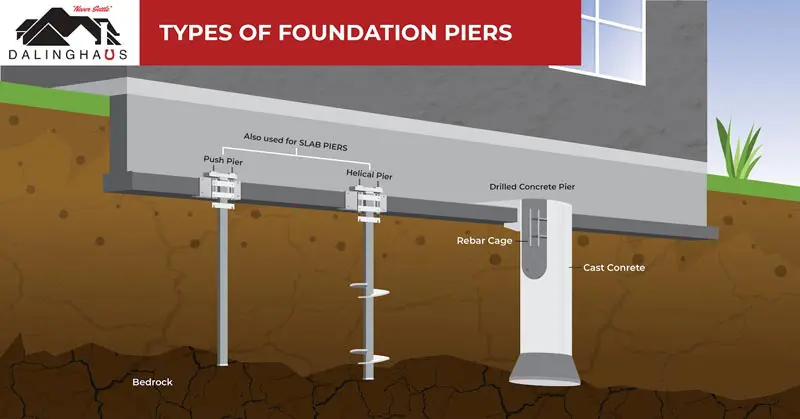
For more information, see Will You Be Able to Lift My Home?
Does Foundation Shifting Make a Home Unsafe?
Usually no. Homeowners often live in a house with differential settlement without realizing it. However, that doesn’t mean it’s a good idea. Differential settlement worsens over time, and if it isn’t fixed, there could come a point where the home is unsafe to live in. However, this usually doesn’t happen unless some catastrophic event has caused severe damage. An earthquake, for example.
It’s essential to address any foundation issues promptly to ensure the safety of everyone living in the house. This may require hiring a professional foundation repair contractor to assess the damage and perform any necessary repairs.
Ways to Help Prevent Your Home’s Foundation From Shifting
Fortunately, there are preventive measures homeowners can take to avoid differential foundation settlement and keep their homes safe and stable. Since differential settlement is often caused by excess moisture in the ground around the foundation, most of these involve getting groundwater under control.
Ensure the yard around your home is properly graded
The yard around your house should slope away from the foundation. This prevents groundwater from draining toward and pooling around the foundation.
Clean your gutters regularly
Clogged gutters can cause water to spill over the side of your home and soak into the ground around the foundation. Clear your gutters of any debris at least twice per year.
Install downspout extensions
Downspout extensions are inexpensive, easy to install, and will carry runoff away from the foundation before release.
Install a drain tile system
A drain tile system is an underground drainage system designed to prevent water from accumulating in the ground around the foundation. It consists of a perforated drainage pipe placed in a trench around the perimeter of a foundation at the footing level. The drainage pipe collects excess water in the ground and directs it toward a sump pit. Once the pit fills with water, a sump pump turns on and expels the water away from the foundation.
Keep trees away from the foundation
It’s best to keep trees at least 5 feet from the foundation. If the tree/vegetation is known to have an aggressive root composition, it may be best to go with a less aggressive rooted tree/vegetation.
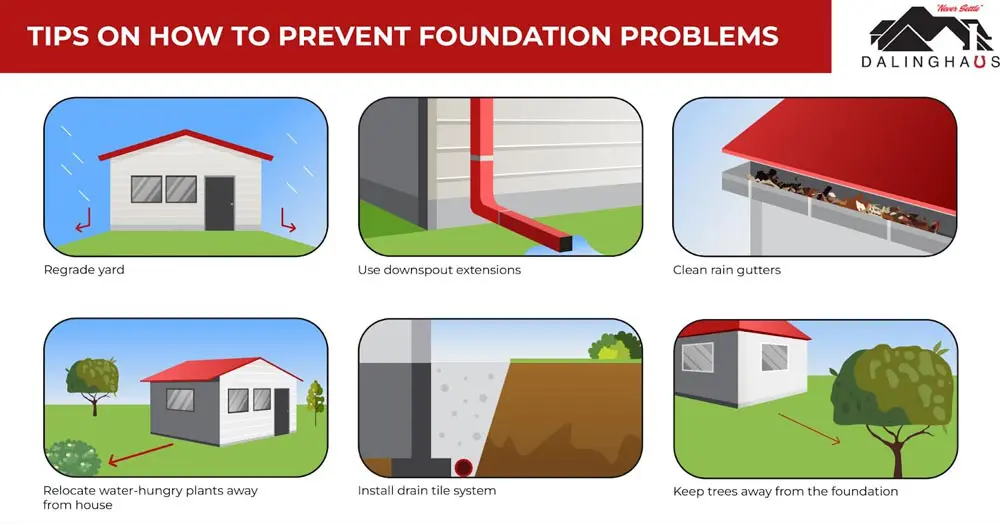
If you think your home’s foundation might be shifting, contact us today to schedule a foundation evaluation. If we find a problem, we’ll give you a repair estimate. We serve Southern California, Arizona, and Nevada.







One Response
Are there any programs in Indiana that will help to pay to have your house fixed? Any type of funding or grants? We built on clay and 33 years later have issues with cracks now.